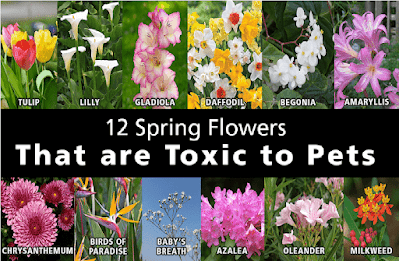Spring Season Pet Care Ensuring Your Furry Friend's Health and Happiness
Spring is a time for pets and owners to enjoy the beauty of spring. Our beloved pets feel the weather are become warmer, so they jump out to the garden, play around, discover the new flowers, climb the trees and lie on the grass. All this bring more challenges to the pet owner to take care of it. Spring allergies, parasites, and environmental hazards need to be address promptly. Pets should be pet-proofed from toxic plants, fertilizers, and pesticides, and their well-being should be ensured through proper hydration, grooming, and water supervision. By adopting a proactive approach and staying informed about potential hazards, pet owners can ensure their pets well-being in the spring season.
1. Seasonal Allergy Awareness
Pets can suffer from seasonal allergies due to pollen, mold, and other allergens. So watch any change of behavers if they start licking or biting their paws. Excessive scratching. Redness of the skin, especially around the eyes and ears and in-between the paws. Shak their head. If so, take your pet to any veterinarian for consultation, and he will recommend treatments like allergy testing, medication, or environment changes, while regular grooming can help remove allergens.
2. Parasite Prevention
Warmer weather increases mosquito activity, posing a threat to pets. Fleas can cause allergic reactions, ticks carry Lyme disease, and mosquitoes carry heart worm. Protect your pet with a comprehensive parasite prevention plan, Clean up pet feces daily since eggs or larvae in feces transmit most intestinal parasites.
Avoid feeding your pet a raw food diet due to the risk of parasites.
Visit your veterinarian for regular Deworming, starting at a young age
and being consistent with Deworming at least four times a year. also topical treatments and environmental control. Monitor your pet by searching all sensitive areas form time to time for any parasite.
3. Vaccinatio
The change of the weather from cold to warm, and the more time the pet spent outdoors, pets are expose to a higher risk of contracting infectious diseases. Vaccinations are crucial for pets' wellness, as they protect them from diseases like distemper, parvovirus, and rabies. Schedule a wellness check-up with your veterinarian to review vaccination status and discuss necessary boosters, ensuring pet health and community safety.
4. Hydration and Nutrition
As the weather begins to warm up and the flowers start
blooming, it’s important to remember that spring also brings about
changes in our pets’ nutritional needs. So in spring, pets require proper hydration and nutrition to maintain their health. Increased water intake and incorporating wet food into their diet can help keep them hydrated. Monitor their weight and adjust their diet accordingly to prevent obesity or malnutrition. Consult with a veterinarian if unsure about dietary needs or transitioning to a new diet. Be mindful of seasonal treats and potential environmental hazards to ensure pets stay healthy and happy.
5. Plant Protection
Spring is a beautiful season. Bring blooming flowers, warmer weather and lush foliage, attracting pet owners for outdoor activities. However, not all plants are pet-friendly, and some can be toxic to dogs and cats. To prevent poisoning, create designated pet-friendly zones or use barriers. And if it grows in your garden alone, please cut it. If a pet ingests a toxic plant, seek immediate veterinary attention for prompt treatment. In the picture above, there is a twelve flowers that are toxic to pets.
6. Spring Exercise and Activity Recommendations
Exercise and physical activity are essential for maintaining the overall health and well-being of our pets. Regular exercise not only helps to keep them physically fit, but it also provides mental stimulation and improves their mood. As the spring season approaches, it is important for pet owners to be aware of how to incorporate exercise and activity into their pet's routine safely.
7. Environmental Enrichment
Springtime provides ample opportunities for outdoor play and exploration, enriching your pet's physical and mental well-being. Engage in interactive games, such as fetch or hide-and-seek, to stimulate your pet's senses and promote bonding. Consider introducing new toys, puzzles, or agility equipment to keep your pet mentally stimulated and entertained. Outdoor adventures, such as hiking or camping, can also provide valuable enrichment experiences for your pet. However, ensure your pet's safety by using appropriate gear, such as harnesses and life jackets, and adhering to local regulations and trail etiquette. By incorporating diverse activities into your pet's routine, you can foster their curiosity, confidence, and overall happiness throughout the spring season.
in the end as spring unfolds its splendor, it's important to prioritize your pet's health and happiness. By being proactive in addressing potential hazards and providing proper care and enrichment, you can ensure that your furry companion thrives in the vibrant and rejuvenating atmosphere of the spring season.







See Some of the flower i like, but i never thought that is toxic for my pet. Thanks for the information
yeah you should be careful and check your garden if you have any of them